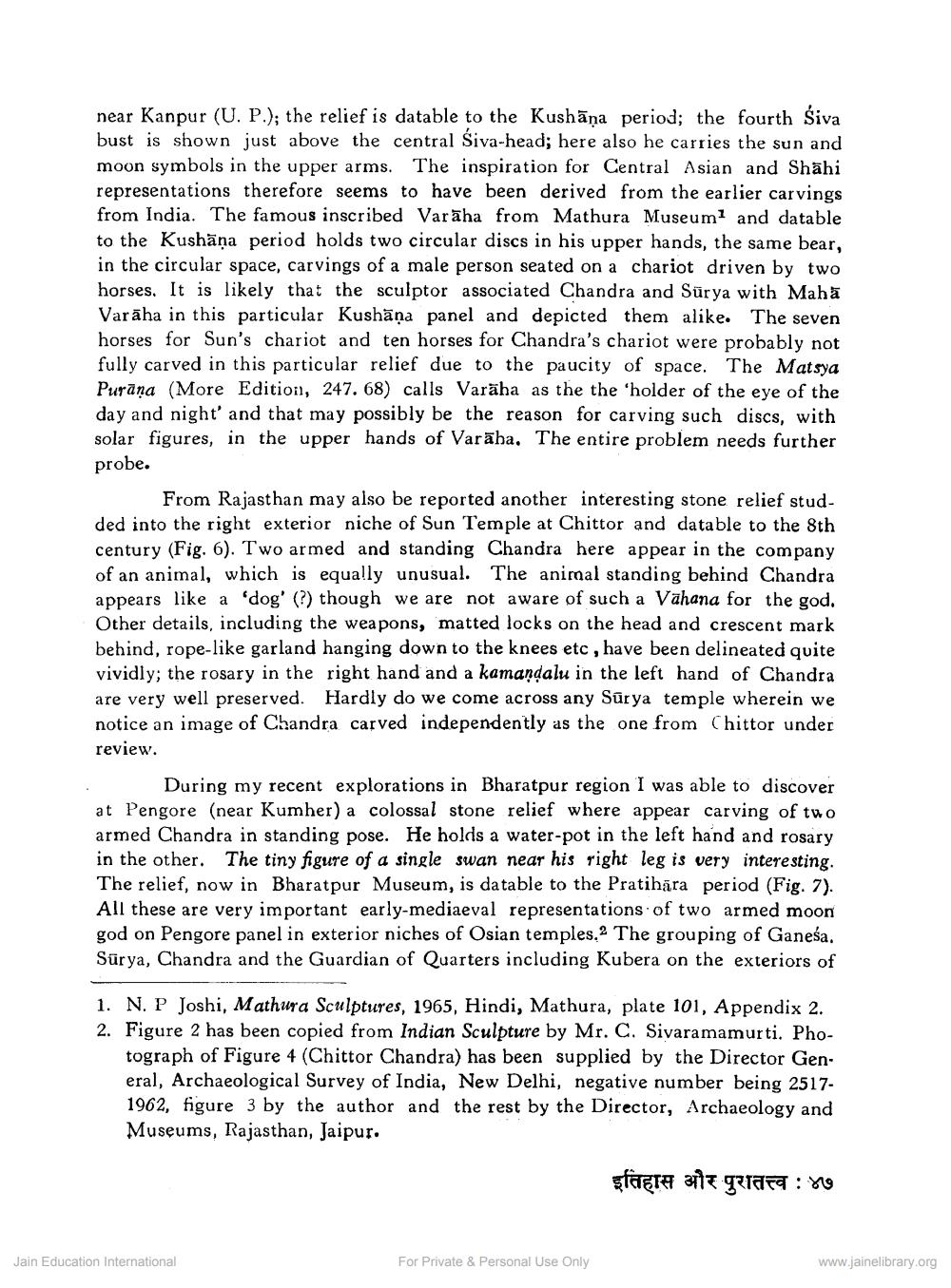________________
near Kanpur (U. P.); the relief is datable to the Kushaṇa period; the fourth Śiva bust is shown just above the central Śiva-head; here also he carries the sun and moon symbols in the upper arms. The inspiration for Central Asian and Shahi representations therefore seems to have been derived from the earlier carvings from India. The famous inscribed Varaha from Mathura Museum1 and datable to the Kushäna period holds two circular discs in his upper hands, the same bear, in the circular space, carvings of a male person seated on a chariot driven by two horses. It is likely that the sculptor associated Chandra and Surya with Mahk Varaha in this particular Kushana panel and depicted them alike. The seven horses for Sun's chariot and ten horses for Chandra's chariot were probably not fully carved in this particular relief due to the paucity of space. The Matsya Purana (More Edition, 247. 68) calls Varaha as the the 'holder of the eye of the day and night' and that may possibly be the reason for carving such discs, with solar figures, in the upper hands of Varaha. The entire problem needs further probe.
From Rajasthan may also be reported another interesting stone relief studded into the right exterior niche of Sun Temple at Chittor and datable to the 8th century (Fig. 6). Two armed and standing Chandra here appear in the company of an animal, which is equally unusual. The animal standing behind Chandra appears like a 'dog' (?) though we are not aware of such a Vahana for the god. Other details, including the weapons, matted locks on the head and crescent mark behind, rope-like garland hanging down to the knees etc, have been delineated quite vividly; the rosary in the right hand and a kamandalu in the left hand of Chandra are very well preserved. Hardly do we come across any Surya temple wherein we notice an image of Chandra carved independently as the one from Chittor under
review.
During my recent explorations in Bharatpur region I was able to discover at Pengore (near Kumher) a colossal stone relief where appear carving of two armed Chandra in standing pose. He holds a water-pot in the left hand and rosary in the other. The tiny figure of a single swan near his right leg is very interesting. The relief, now in Bharatpur Museum, is datable to the Pratihara period (Fig. 7). All these are very important early-mediaeval representations of two armed moon god on Pengore panel in exterior niches of Osian temples, The grouping of Ganesa. Surya, Chandra and the Guardian of Quarters including Kubera on the exteriors of
1. N. P Joshi, Mathura Sculptures, 1965, Hindi, Mathura, plate 101, Appendix 2. 2. Figure 2 has been copied from Indian Sculpture by Mr. C. Sivaramamurti. Photograph of Figure 4 (Chittor Chandra) has been supplied by the Director General, Archaeological Survey of India, New Delhi, negative number being 25171962, figure 3 by the author and the rest by the Director, Archaeology and Museums, Rajasthan, Jaipur.
इतिहास और पुरातत्त्व : ४७
Jain Education International
For Private & Personal Use Only
www.jainelibrary.org




